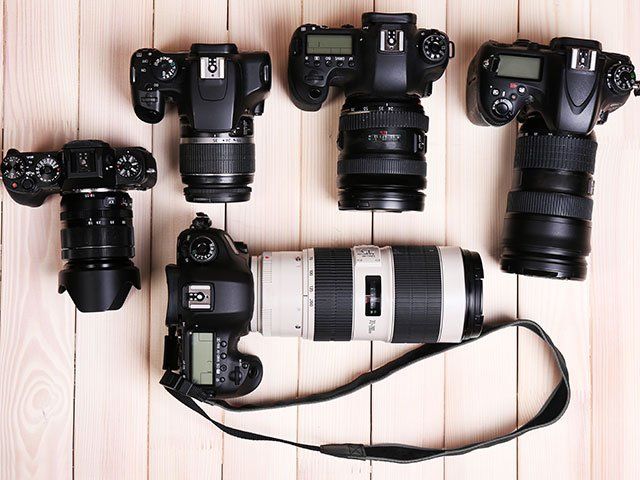
In the vast universe of visual expression, the camera emerges as both a meticulous tool and a creative conduit. The ability to encapsulate moments, emotions, and stories within the frame is an art that melds precision and imagination. As photographers, we are not just capturing images, but crafting visual narratives through the delicate art of framing the perfect shot.
The Canvas of Composition
Every photograph is a canvas waiting to be painted upon, with the camera serving as the brush that strokes reality into stillness. The art of composition governs this process, determining the arrangement of elements within the frame. The rule of thirds, leading lines, and negative space are not just buzzwords; they are the vocabulary of visual storytelling.
Focal Points and Leading Lines
A skilled photographer knows that the eye naturally gravitates toward certain points within an image. These focal points serve as anchors, drawing the viewer’s attention to the heart of the narrative. But what guides the eye to these points? It’s the elegance of leading lines, those subtle pathways that traverse the frame, guiding the gaze toward the intended subject. Be it a meandering road, a winding river, or a simple beam of light, these lines are the silent storytellers, shaping the way we perceive an image.
Balance and Symmetry
While asymmetry often lends an image dynamism, the allure of balance and symmetry is undeniable. A camera is akin to a sculptor’s chisel, carving out equilibrium within the frame. A symmetrical composition can evoke feelings of stability and harmony, while an intentionally imbalanced arrangement might spark curiosity and tension. Understanding how to manipulate these elements is akin to conducting a symphony of emotions within a still image.
Negative Space and Breathing Room
In the dance of composition, the spaces between elements are as crucial as the elements themselves. This phenomenon is known as negative space, and it’s not just empty area; it’s the void that gives the subjects room to breathe. The careful utilization of negative space enhances the visual impact of the subject, allowing it to shine against a backdrop of subtlety.
Depth and Layers
A photograph isn’t confined to just the two dimensions of the frame; it has the potential to convey depth and layers that mimic reality itself. Skilled photographers leverage this by introducing foreground, middle ground, and background elements that intertwine to create a multidimensional experience. The artistry lies in how seamlessly these layers blend, crafting an image that beckons viewers to step into its world.
Embracing Unconventional Angles
In the realm of framing the perfect shot, embracing unconventional angles can yield captivating results. Rather than capturing subjects from eye level, consider looking up, down, or even shooting from unexpected vantage points. These perspectives can unveil new dimensions and spark fresh interpretations, inviting viewers to see the familiar through a different lens.
Contextualizing the Narrative
Photographs are more than isolated images; they are snippets of a larger story. A skilled photographer understands the importance of contextualizing the narrative within the frame. Whether it’s a street scene bustling with life or a portrait that encapsulates an individual’s essence, the environment surrounding the subject provides a backdrop that enhances the story’s depth.
The Dance of Light and Shadow
Light is the brushstroke of photography, and shadow its contrasting canvas. The interplay between light and shadow shapes the mood, texture, and atmosphere of an image. Understanding the science of lighting is a camera wielder’s most valuable skill. The gentle caress of golden hour sunlight or the dramatic contrast of chiaroscuro can transform a mundane scene into an ethereal tableau.
Simplicity and Minimalism
In the age of information overload, simplicity is a beacon of clarity. The art of minimalism in photography lies in distilling a scene to its essence. By eliminating distractions and focusing on key elements, photographers can create images that are both powerful and meditative. Sometimes, it’s the absence of clutter that speaks volumes.
The Rule of Odds
Odd numbers have an intrinsic charm that transcends mathematics. The rule of odds dictates that compositions with an odd number of subjects are often more visually engaging. Perhaps it’s the slight imbalance that draws the eye, or the notion that a trio or quintet hints at a story waiting to be uncovered. Whatever the reason, adhering to this rule can add an air of intrigue to your images.
Final Thoughts
In the realm of photography, capturing a moment isn’t just about pointing and clicking. It’s a delicate interplay of vision, technique, and emotion. The camera is not merely a mechanical device; it’s a tool that enables us to translate the language of life into a visual dialect. Within its rectangular frame lies the potential to freeze time, evoke emotions, and convey narratives that resonate across generations. So, as you peer through the viewfinder, remember that you’re not just capturing an image; you’re crafting a story, one click at a time.

